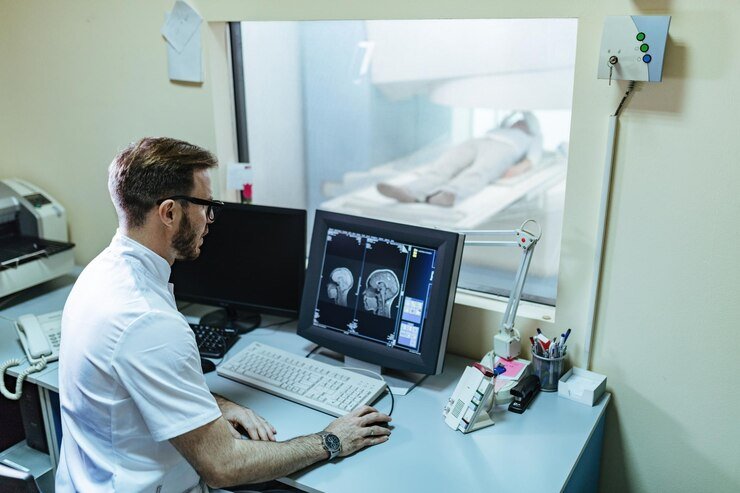Introduction
Neurological diseases encompass a wide range of conditions that affect the nervous system, including the brain, spinal cord, and peripheral nerves. These diseases can lead to various symptoms, including motor dysfunction, cognitive issues, pain, and more. With the growing need for awareness, DoctorHub360 aims to provide in-depth insights into these diseases, their causes, symptoms, and treatment options. Doctorhub360.com neurological diseases can be debilitating, but understanding them better opens doors to effective management and better quality of life for those affected.
1. What Are Neurological Diseases?
Neurological diseases are disorders that affect the nervous system, causing disruptions in normal brain function. The brain, spinal cord, and peripheral nerves are all integral components of the nervous system, and any disruption in their functioning can lead to significant health issues. These diseases can be caused by a variety of factors, including genetic predisposition, environmental influences, infections, or injuries. Common neurological diseases include Alzheimer’s disease, Parkinson’s disease, epilepsy, multiple sclerosis, and stroke. The impact of these conditions ranges from mild cognitive impairments to severe motor dysfunction, significantly affecting the quality of life of those who suffer from them.
2. Common Types of Neurological Diseases
There are several types of neurological diseases that affect individuals worldwide. Alzheimer’s disease is one of the most well-known forms of neurodegenerative disorders, marked by memory loss and cognitive decline. Parkinson’s disease, another common neurological condition, is associated with tremors, stiffness, and difficulty with movement. Multiple sclerosis is a condition that disrupts the communication between the brain and the rest of the body, often causing muscle weakness and coordination problems. Additionally, stroke is a condition that occurs when there is a disruption in blood flow to the brain, leading to brain damage and potential paralysis. Epilepsy, which is characterized by recurrent seizures, is also prevalent. These diseases often have overlapping symptoms but require specific treatments based on their unique pathophysiology.
3. Causes and Risk Factors
Neurological diseases can have multiple causes, ranging from genetic factors to environmental influences. Genetic mutations often play a significant role in hereditary neurological conditions, such as Huntington’s disease or some forms of Alzheimer’s. Environmental factors, including exposure to toxins, viruses, or chronic stress, can also contribute to the onset of these diseases. Lifestyle factors, such as smoking, a sedentary lifestyle, and poor diet, increase the risk of developing neurological disorders, including stroke and cognitive decline. Moreover, age is a primary risk factor for many neurological diseases, with conditions like Alzheimer’s and Parkinson’s becoming more prevalent in the elderly. Understanding these causes and risk factors is essential for early detection and intervention, which can help slow the progression of these diseases and improve patient outcomes.
4. Symptoms and Early Detection
Recognizing the early symptoms of neurological diseases is critical for effective management. In conditions like Alzheimer’s disease, the early signs include forgetfulness, difficulty in finding words, and confusion about time and place. In Parkinson’s disease, patients may experience a tremor, slow movement, and rigidity in muscles. Symptoms in other neurological diseases vary greatly depending on the type, but common warning signs include persistent headaches, dizziness, memory problems, changes in vision, seizures, and difficulty with balance and coordination. Early detection can lead to earlier intervention, which is crucial in slowing down disease progression, managing symptoms, and enhancing quality of life for patients. Regular screenings, particularly for individuals at high risk, are key in identifying neurological disorders before they become debilitating.
5. Diagnosis and Testing
Diagnosing neurological diseases requires a thorough medical history, physical examination, and sometimes advanced imaging techniques. Doctors may use brain scans, like MRI or CT scans, to detect structural abnormalities in the brain. Electromyography (EMG) and nerve conduction studies can help identify nerve damage. For some conditions, genetic testing may also be used to identify inherited disorders. Neuropsychological testing is commonly employed to assess cognitive decline and its impact on daily functioning. These diagnostic tools, along with a careful examination of symptoms, assist healthcare professionals in determining the exact nature of the disease and tailoring an effective treatment plan.
6. Treatment and Management of Neurological Diseases
While many doctorhub360.com neurological diseases have no cure, treatment options are available to help manage symptoms and improve patients’ quality of life. Medications are commonly prescribed to manage symptoms. Surgical interventions, such as deep brain stimulation (DBS) for Parkinson’s disease, may also offer symptom relief for some patients. Lifestyle changes, including regular exercise, a balanced diet, and cognitive therapy, play an important role in managing neurological diseases.
7. The Future of Neurological Disease Treatment
The future of treating neurological diseases is promising, thanks to advancements in medical research and technology. Scientists are exploring new therapies, such as gene editing and stem cell treatments, which could offer potential cures for previously untreatable neurological conditions. Immunotherapies, targeted drug therapies, and advancements in brain-computer interfaces are also being developed to enhance treatment effectiveness.
8. Conclusion
Neurological diseases are complex and diverse, affecting millions of people worldwide. While these conditions can be challenging to manage, significant progress has been made in terms of understanding their causes, recognizing early signs, and developing treatments to improve quality of life.

